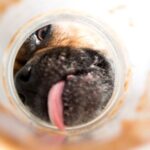Dealing with bed bugs is stressful enough, but when you have pets, the concern amplifies. Ensuring the safety and comfort of your furry, feathered, or scaled companions during bed bug treatment is paramount. This guide provides essential steps to protect your pets and effectively manage bed bugs in your home.
Communicating with Pest Control Professionals about Your Pets
Open communication with your pest control service is the first critical step. Before any treatment begins, inform your exterminator about all pets living in your home. This includes detailing the types of pets, their number, and their typical areas within your residence. Mention any specific health issues or allergies your pets might have. This information is vital for professionals to select the safest and most appropriate treatment methods for your situation.
Furthermore, proactively ask your exterminator for detailed instructions regarding your pets during and after the bed bug treatment process. These instructions might include recommendations for temporary relocation of your pets, specific cleaning procedures for pet areas, or any necessary post-treatment care to ensure their well-being. Clear and thorough communication ensures a safer and more effective bed bug eradication process for your entire household, including your beloved pets.
Preparing Your Home by Clearing Pet Accessories
Before the scheduled bed bug treatment, a crucial step is to remove all pet-related items from areas that will be treated. This includes pet beds, toys, food and water bowls, blankets, scratching posts, and even loose pet fur or feathers. Bed bugs can hide in these items, so they must be addressed to prevent re-infestation.
Carefully inspect items like pet beds, plush toys, and blankets, as well as your own belongings such as bed frames, mattresses, and upholstered furniture, for potential bed bug hiding spots. These items should be thoroughly cleaned or, if heavily infested or not easily cleaned, considered for disposal. For washable pet items, use hot water in the washing machine whenever possible. For items that cannot withstand high heat, consider using a pet-safe insecticidal soap. For larger items like pet beds, vacuuming thoroughly followed by washing and drying can be effective. Remember, reintroducing untreated pet accessories back into treated areas can lead to a bed bug resurgence, negating the treatment efforts. Ensuring all pet-related items are properly cleaned or replaced is a vital part of a successful and comprehensive bed bug treatment strategy.
Conclusion
Protecting your pets during bed bug treatment involves proactive communication and thorough preparation. By informing your pest control professional about your pets and diligently removing and cleaning pet accessories, you create a safer environment for your animals and enhance the effectiveness of the bed bug treatment. Taking these steps will contribute to a successful eradication and peace of mind for you and your pets.
